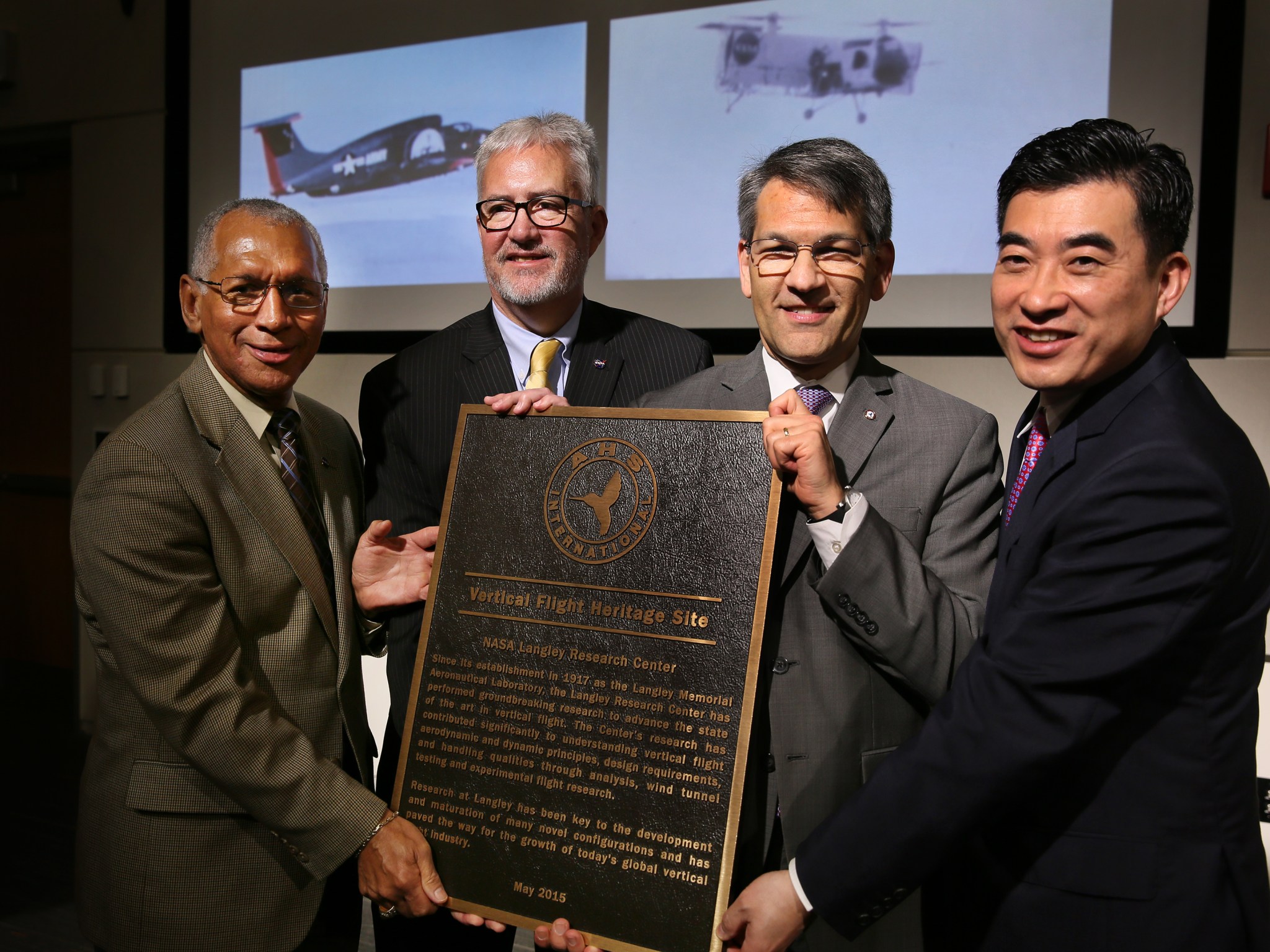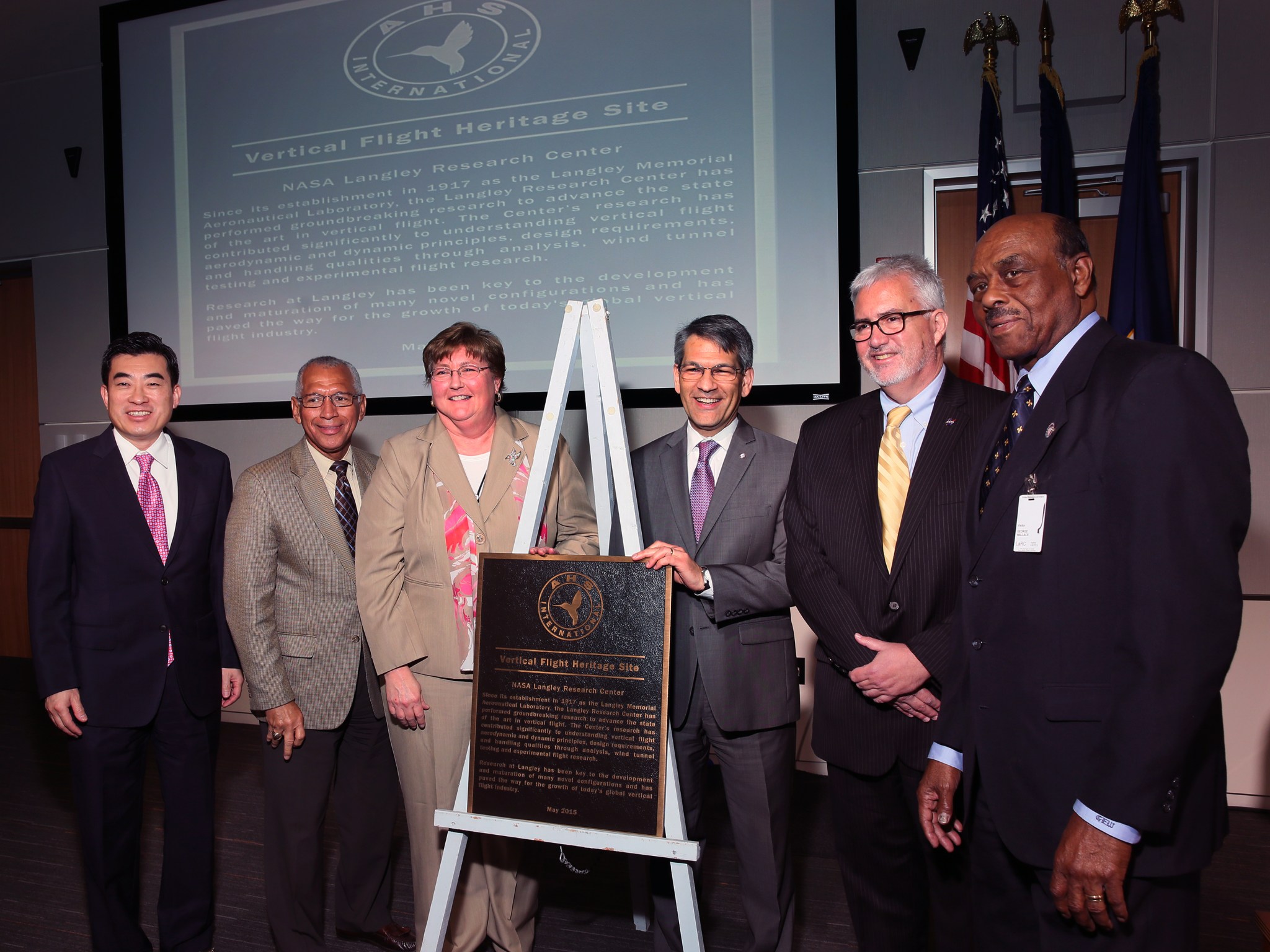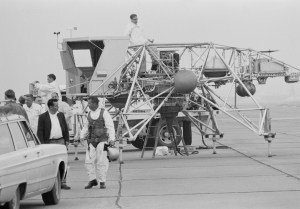
The helicopters that buzz through American skies today were made possible — and safer — by decades of landmark work done by scientists and engineers at NASA’s Langley Research Center.
That fact was celebrated Friday, May 8, when the American Helicopter Society International officially named the center as a Vertical Flight Heritage Site. The honor means that NASA Langley ranks among the most historically significant places in the world for rotorcraft innovation.
“Research at Langley has been key to the development and maturation of many novel configurations and has paved the way for the growth of today’s global vertical flight industry,” a new historical marker reads.
As early as 1920, just three years after construction began at what would become NASA Langley, important vertical flight research was happening there.
At Friday’s ceremony, Mike Hirschberg, executive director of AHS International, explained that knowledge compiled at Langley served as a foundation for the study of vertical flight.
“Here is where it all happened, with world-class facilities and world-class researchers, who continue today to conduct impactful, groundbreaking — even ground impacting — research,” Hirschberg said. “We hope it will continue to lead the nation in vertical flight research in decades to come.”

NASA Administrator Charles Bolden and Associate Administrator for Aeronautics Jaiwon Shin both traveled to Langley to accept the honor on behalf of the agency.
“It’s because of my love for rotary wing aircraft, for vertical flight, that I’m really proud to be here today,” Bolden told a crowd at the center’s Integrated Engineering Services Building. “I don’t like catchy phrases … but I’m kind of chipper for choppers.”
Bolden congratulated the men and women of team Langley and said it’s fitting that the Vertical Flight Heritage recognition takes place in the same year as the 100th anniversary of NACA’s founding. The National Advisory Committee for Aeronautics was the precursor to NASA. Langley was the NACA’s first field center.
Dave Bowles, acting center director for NASA Langley, marveled at the accomplishments of researchers past and present. “I feel a great sense of pride when I look back and see all the things we’ve done over nearly 100 years,” Bowles said. “It’s just amazing the impacts we’ve had across the nation. Our researchers still wrestle with solving the various challenges associated with vertical flight, but that’s what we love to do.”
As part of the ceremony, a video provided a quick tour of 95 years of Langley innovation. It included pictures of vehicles with names such as Flying Banana, Autogiro and Sky Crane as well as images of helicopter crash tests and cutting-edge computer models.
Susan Gorton, Langley’s project manager for Revolutionary Vertical Lift Technology, said she’s inspired by the history of helicopter advances at the center.
“We really are standing on the shoulders of giants,” she said. “This honor really underscores our sense of place and purpose. It gives you a sense of how far we’ve come, but also the challenges that lie ahead,” she said.
With current projects like the electric-powered Greased Lightning GL-10 and an increasing focus on autonomy and personal air vehicles, big milestones lie ahead.
“Sometimes when you think your challenges are insurmountable, you look back and say, ‘Look how far we’ve come.’ That gives you the inspiration to keep going forward,” she said. “You think, ‘My hill’s not too high to climb.’”


































